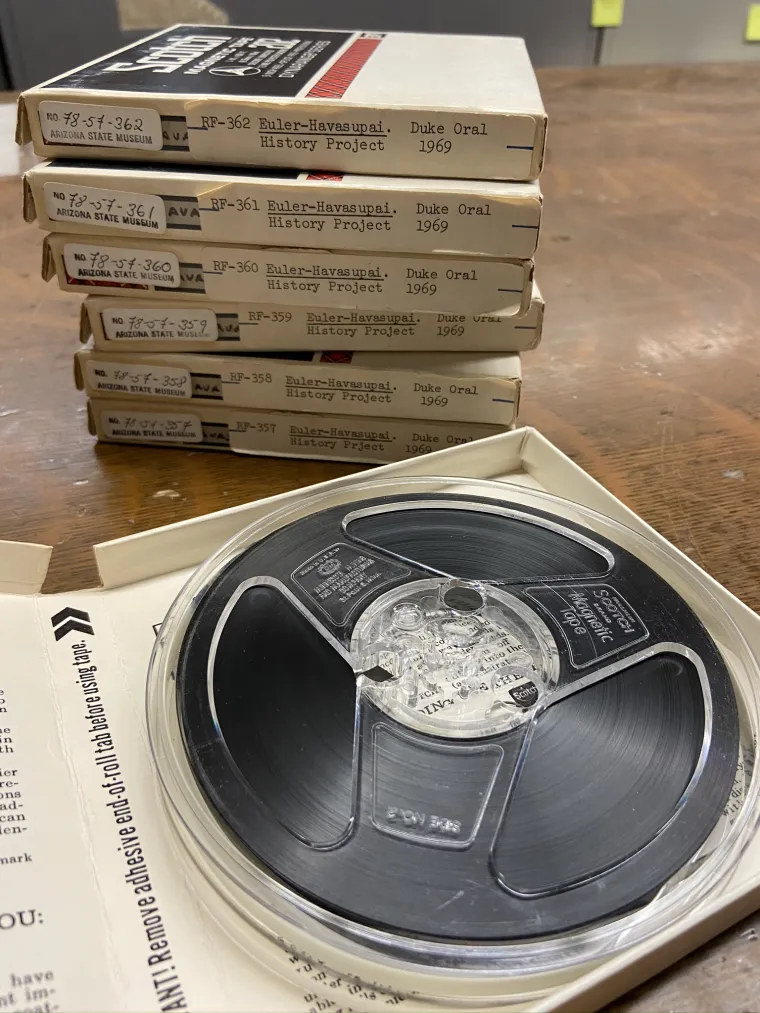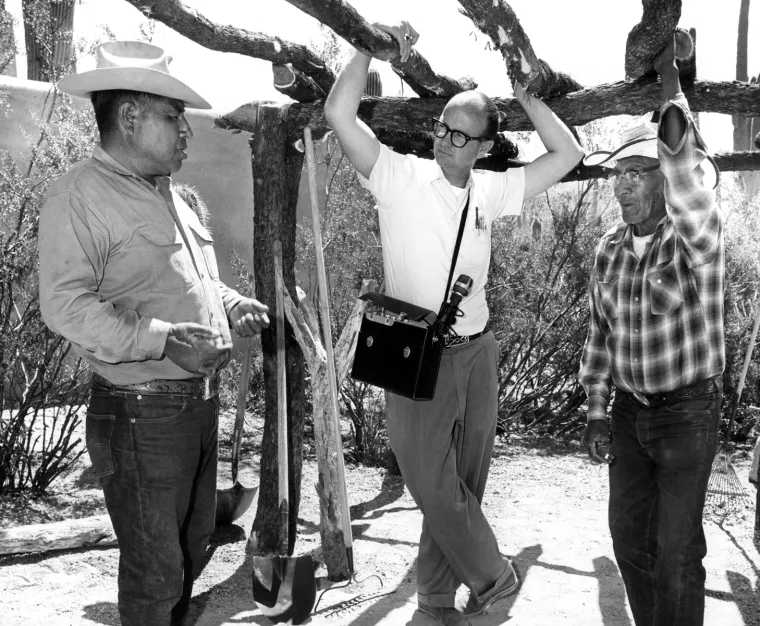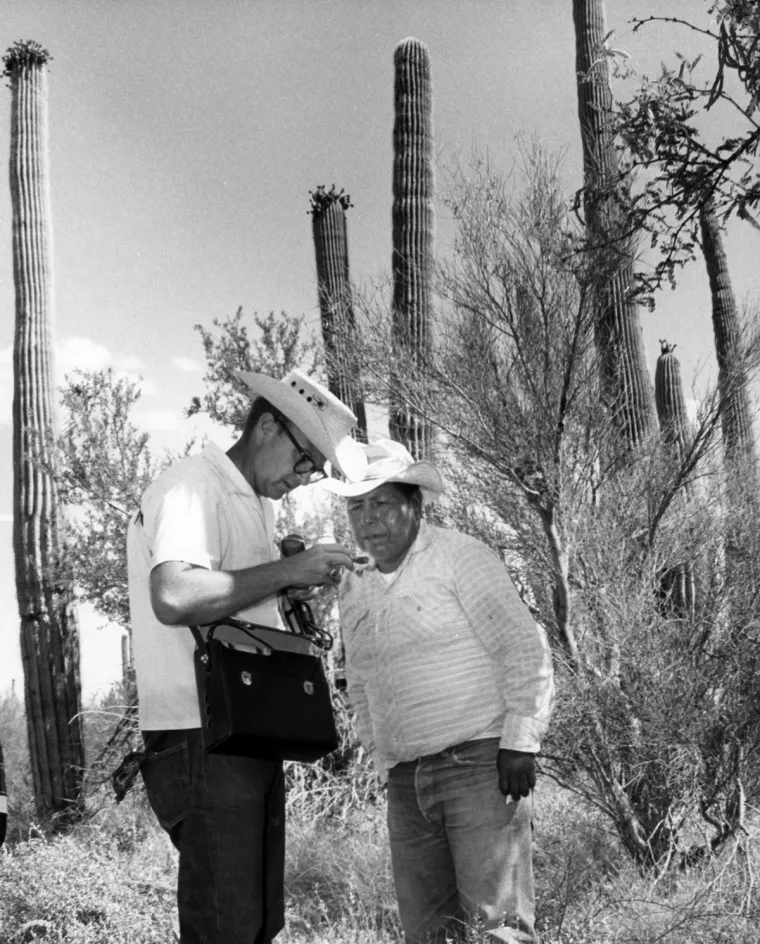
The Arizona State Museum is the repository for over 800 sound recordings made between 1938 and 1987. The primary geographical focus of the collection is the southwestern United States and northern Mexico. The primary cultural focus is Native American groups. However, the collection also contains recordings from cultures as far away as Africa and the Philippines. The collection, except for some culturally sensitive or otherwise restricted materials, is available to the public. Unfortunately, only twenty-five percent of the collection has been transcribed. All of the recordings have been duplicated onto cassettes and, with the exception of the restricted materials, may be listened to at the museum.

Lorentino Noceo, Bernard Fontana, and Frank Lopez discussing the reconstruction of a brush house and ramada at the Arizona-Sonora Desert Museum in Tucson. Helga Teiwes, photographer, 1968. ASM Negative No. 18920.
Sixty percent of the collection is comprised of the University of Arizona's portion of the Doris Duke American Indian Oral History Project. Other schools which also had projects include the universities of: California at Los Angeles, Florida, Illinois, New Mexico, Oklahoma, and South Dakota. At the University of Arizona, the project was under the direction of Dr. Bernard L. Fontana and the majority of the work was done between 1966 and 1972. The focus of this portion of the project was to encourage Native peoples to record their own culture from their own viewpoint. In 2020 the Doris Duke Charitable Foundation funded the revitalization of the recordings and the creation of the Archive of Native American Oral History.
Browse and search the Doris Duke Native American Oral History collection here.

Lorentino Noceo showing Bernard Fontana saguaro fruit gathered near Sil Nakya, Tohono O’odham Nation, Arizona. Helga Teiwes, photographer, 1968. ASM Negative No. 19211.
Of the non-Doris Duke recordings in the ASM archives, almost all were done by people with long-standing relationships with a particular community or tribe. A comprehensive index to the Sound Recordings collection was prepared by Kirsten Tedesco in 1987, including information, when available, on who did the recording, who was being recorded, the language spoken on the recording, the general subject matter of the recording, and the ethnic or cultural affiliation of those being recorded. A listing of the cultures and groups recorded, as identified in the index, is presented below, with the number in parentheses indicating how many recordings are in the collection.
Index by subject culture
(the number following the subject is the number of recordings within that subject)
Search recordings in our online catalog.
(use the advanced search option and select “sound recording” from the FORMAT drop-down menu for best results)





